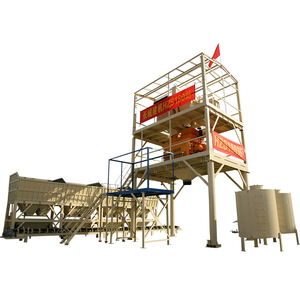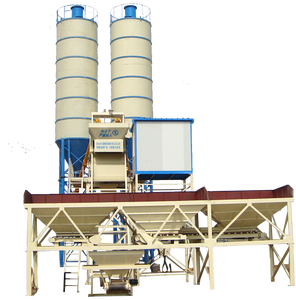(352 products available)


































































































































































A cement silo 120t is a large, cylindrical storage container used to store bulk cement and other powdery substances like fly ash, slag, and lime. It comes in various designs and types to suit different industrial needs and provides an efficient way of storing cement without worrying about any leakage or loss of material. Here are the most common types of cement silos:
Horizontal Cement Silos:
The horizontal cement silo has a cylindrical storage container positioned horizontally. It is primarily used for bulk storage and temporary holding of cement on construction sites. This type of silo is easily mounted on trailers or trucks for transportation. It is designed for mobility. This silo can be towed or moved around construction sites easily, which is a benefitting feature zeroing in on efficiency. Typically, horizontal cement silos have a flat bottom or legs for stability, which enables them to be fastened securely to the ground or to structures. To prevent contamination and protect the quality of the cement, the horizontal silos are sealed and covered with lids or hatches when not in use. This is so that environmental factors like moisture and dust do not have an effect on the material.
Flexible Cement Silos:
Generally made from heavy-duty PVC, polyester, and coated material, the flexible cement silo is a large inflatable bag-type storage container or bag that's used to hold bulk quantities of cement. They are often used in conjunction with portable concrete plants and on large construction sites far from commercial supply lines to cut down on costs and waste. When the silo is under pressure from stored cement, the bag expands and takes the shape of a silo; when empty, it can be folded or rolled up for easy transport and storage. Many of these flexible silos come with reinforced seams and multiple compartments for added protection. Not only do they protect against spillage, but they also allow for rapid loading and unloading. Most of these silos come with dust collecting systems that ensure all waste product goes back to the production line.
Integrated Cement Silos:
The integrated cement silo is a vertical storage container that's built directly into the structure of certain types of concrete plants and also batching plants. It is usually manufactured from galvanized steel or carbon steel sheets. The integrated silo provides a seamless, centralized storage solution that reduces the need for external handling and transportation of materials. This again enhances efficiency and streamlines production processes. Some of the integrated silos come with advanced level indicators and automated feeding systems, thus allowing for precise control and monitoring of cement levels.
Aerated Cement Silos:
The aerated cement silo, which is also sometimes referred to as a pneumatic or fluidized silo, is a large storage container with a sophisticated aeration system that controls the flow and discharge rate of cement. What separates these silos from others is the presence of a blowers or pumps that prop air into the silo thus creating a fluidized bed or air cushion that allows the cement powder to flow freely. This, in turn, permits controlled and consistent discharge rates, lowers segregation of stored material, and enhances handling efficiency. Some integrated aerated cement silos are equipped with sensors and controllers that allow for precise management of airflow and cement discharge, thus improving automation and operational control in the storage and dispensing of cement.
The below table summarizes some key specifications of a 120-ton cement silo commonly used in the construction industry.
Cement Silo Design
Capacity: 120 tons (120,000 kg) silo has outer diameters of 3.66 meters and heights of about 10.46 meters.
Cement Silo Materials
A 120-ton cement silo with a thin wall is made of high-quality steel plate with a galvanized surface. Material thickness; 3mm for top cone, 3mm for body, 4mm for bottom cone, and 5mm for legs.
Cement Silo Accessories
Venting Cap: The venting cap at the top allows air to escape from the silo when cement is being filled. It also prevents the entry of rain or animals into the silo.
Cement Silo for Sale
Cement silos are available for sale in different capacities. A 120t silo is equal to 120,000kg. A 200t capacity silo is also available. For Benz cement, please refer to Calabar cement silo.
Regular inspection and maintenance processes are critical to ensure the efficient functioning, stability, and safety of the cement silos. Consider the following tips:
Visual Inspection:
Frequent visual checks should be made to silo structure to discover any potential problems, such as dents, cracks, corrosion, loose parts, or signs of material leakage or obstruction. The silo surroundings should be tidied up to prevent the blockage or overflow of materials at the entry and exit points.
Cleaning and Maintenance:
Carry Out Regular Cleaning: Cements or any other materials in the silo may lead to the growth of bacteria or pests. Conduct Regular Cleaning to avoid this to improve the quality of materials stored. Cleaning Procedures should be based on the kind of materials stored, the structure, and the degree of pollution. Use the Appropriate Equipment and Cleaners to ensure safety and avoid damaging the silo.
Pay Attention to the Safety:
When operating in the silo, make sure to wear safety helmets, safety belts, and other protective equipment. Also, ensure good ventilation in the silo. Carry out Risk Assessment Regularly to identify potential hazard sources and take appropriate risk control measures. For example, silo fire risk may be high due to the presence of flammable materials like dust, cement, and air. To avoid this, ensure there are no sources of fire and are in line with standards.
Lubrication: A 120t cement silo has many movable parts, such as valves and brakes. Lubricate them regularly to keep them smooth and working well.
120t silos for cement are applicable in infrastructure and construction industries where bulk storage and supply of cement or other dry bulk materials are required. Here are some of the usage scenarios of this type of silo.
Large-Scale Construction Projects
120-ton cement silos are commonly used in large construction projects that involve massive cement demand, like bridges, dams, highways, and high-rise buildings. The silos on the project sites allow for the continuous supply of cement, ensuring that construction maintains the proposed schedule.
Cement Plants/Factories
Cement plants use 120t cement silos to store finished products (cement) or various raw materials (limestone, clay, iron ore, and others) needed for cement production. The silos have the capacity for large volumes, thus enabling cement production processes to flow without interruption.
Concrete Batching Plants
In the case of both mobile and stationary cement silos, 120t silos are the most common configurations for batching plants. The silos store cement precisely and efficiently, allowing for the constant production of concrete mixes for different construction projects.
Infrastructure Development
When it comes to road construction, public-transport systems, urban expansion projects, or infrastructure development in general, 120-ton silos for cement are relevant pieces of equipment. Be it through flyovers, highways, railways, or other forms of infrastructure, large volumes of concrete are needed for such projects. Therefore, having a 120t silo on-site will ensure an uninterrupted supply of cement to support it and more projects like it.
Shotcrete Applications
In cases where shotcrete (wet or dry sprayed concrete) is applied for tunneling, underground support, mining, or slope stabilization, 120t cement silos may be used to store the dry bulk material. Storing cement in silos instead of bags helps keep costs down and allows for a quicker, more streamlined application process.
Pavement and Road Construction
Cement silos can be used to store other materials besides cement. In the case of 120t silos for asphalt, for example, they are commonly used in the paving industry to store asphalt for road repairs or construction. Here, they may be used alongside other types of silos to make sure that the asphalt mix is consistent and that the materials supply is efficient.
Soil Stabilization
Cement silos (120t ones and others) are used in soil stabilization processes to store cement precisely. This is done to enhance the strength and stability of the soil by mixing cement with it. The method is commonly adopted in construction projects that require a solid, stable foundation.
Choosing the right 120-ton cement silo may have an immense impact on the efficiency, productivity, and cost-effectiveness of the construction project. Here are some crucial factors to consider when selecting cement silos:
Supply Chain Management
It is important to consider the entire supply chain. Look for suppliers who provide excellent delivery and storage options. They will ensure that the cement is available whenever needed to avoid delays in construction.
Flexibility
Check how adaptable the cement silos are. Consider their capacity to handle different types of cement and their ability to be moved or expanded to meet changing project requirements.
Quality Assurance
To guarantee that the cement silo will function well on-site, make sure to choose a supplier who follows international standards for construction and who offers good quality. Regular checks will help to spot any possible problems before they become serious.
Innovative Features
Consider modern cement silos with technological advancements like automated monitoring systems for predicting maintenance needs and ensuring efficient usage. These smart features enhance productivity and minimize downtime by allowing proactive maintenance planning.
Safety and Compliance
Please ensure the cement silos satisfy all applicable safety regulations and standards. Look for features that help to prevent accidents, like safety guards, proper ventilation, and emergency shutdown systems. Choosing silos with these safety measures reduces the risk of incidents on the construction site.
Integrated Solutions
Explore suppliers who provide complete solutions, such as silos with associated machinery, maintenance services, and effective cement transfer systems. Opt for a supplier who offers all these services and pieces of equipment under one roof to simplify management and coordination.
Q1: How does a cement silo work?
A1: The silo is divided into four parts and assembled together into a vertical column. While the bottom of the silo is wider than the top to provide stability. An elevator raises the cement to the top of the silo where it is released through a funnel into a mixer truck or batching plant.
Q2: What is a silo for cement?
A2: Cement silos are used to store bulk cement and other materials like fly ash, lime, and granulated blast-furnace slag. They have cylindrical shapes and are made of steel or sometimes concrete. The silo can store anything from 20 tons to over 5,000 tons of cement or other powdered material.
Q3: What is the difference between silo and cemnt silo?
A3: A storage silo is a tall cylindrical structure used for storing bulk materials like grain or cement. A cement silo is a specific type of storage silo that stores cement in particular.
Q4: What are the types of cement silos?
A4: There are three main types of cement silos: the horizontal silo, the cone-bottom silo, and the dust collector silo. They are used for different types of construction projects.